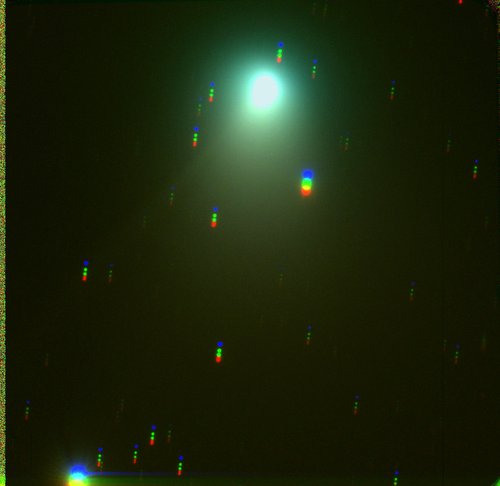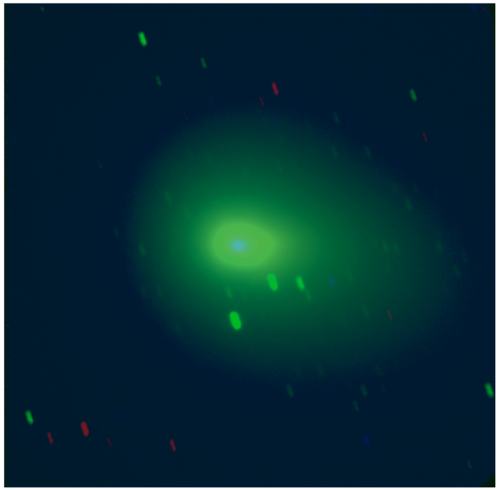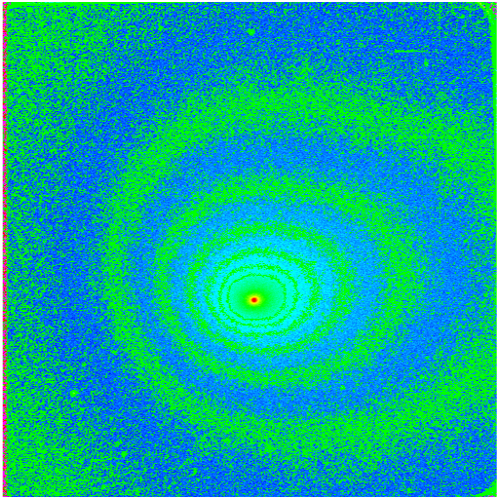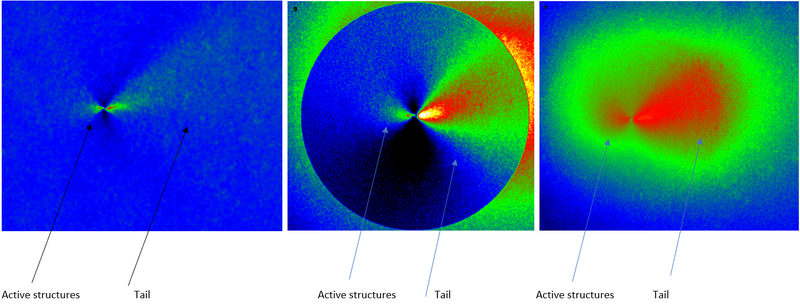Comet C/2022 E3 (ZTF)
The comet C/2022 E3 (ZTF) is a long-period comet from the Oort Cloud that was discovered by the Zwicky Transient Facility (hence 'ZTF') on 2 March 2022 at Mount Palomar, California.
Image on 2 Jan 2023
The comet C/2022 E3 (ZTF) is a long-period comet from the Oort Cloud that was discovered by the Zwicky Transient Facility (hence 'ZTF') on 2 March 2022 at Mount Palomar, California. Its estimated period is 50,000 years, so as jokingly written on different websites, Neanderthals were the last to see it. In December 2022 it was called the comet of the month as it expects to continue brightening and may be visible by the naked eye in Feb 2023 (upto 5th mag). It will pass the perihelion on Jan 12 at about 1 AU from the Sun, and will pass as close to the Earth as 0.3 AU in early February.

We observed it on Jan 2 with the HCT (IIA, Hanle) in 3 filters: B (3x60sec), V (2x30sec), and R (4x10sec) to create the RGB – the `true’ colour image by co-adding the images in B, V and R bands. Comet C/2022 E3 has a greenish wide coma (at least 6' wide), a short fan-shaped dust tail, and a long, straight ion tail (by some estimates it is 2 degrees long). We calculated the magnitudes of this comet as follows: 10.4 in R band, 10.2 in V band, and 10.8 in B.
Observers: Margarita Safonova and Mulchand Kurre (IIA). Image analysis: Margarita Safonova and Bharat Chandra (IIA). Brightness calculation: Igor Lukyanyk, Olexandra Ivanova (Astronomical Institute, Slovak Academy of Sciences).

Image on 4 Feb 2023 - closest to Earth!


We have observed Comet E3 on February 02 and February 04, 2023, when it was at the closest distance to the Earth: at 0.2856 AU on Feb. 02, and at 0.3003 AU on Feb. 04. The comet has developed very large coma – actually larger the telescope’s FOV, and we estimate its magnitude to be about 4.6. This time we have observed the comet in a very special mode – when the telescope follows the comet as it moves fast through the sky; because at that time the comet’s physical speed was ~58 km/sec; and the angular speed was 1 pixel per second.
We have created an RGB – a true colour – image by co-adding the images in B, V and R. The famous green coma of this comet is the result of large amount of cyanogen (CN: a carbon-nitrogen bond) and diatomic carbon (C2: a carbon-carbon bond) molecules in the comet: solar UV light excite the electrons in these molecules, causing them to emit a green glow when they drop back down in energy. Coma’s green colour is also an indicator that the comet is active (outgassing) and warm (close to the Sun), and that the potential for an eruption from the comet's nucleus is at its highest.
Intensity maps of comet C/202 E3 in R filter. Left: image processed by a rotational gradient method; Middle: image to which a division by 1/r profile was applied, and Right: image divided by the median. Very clearly we see the forward expulsion of the matter to the front of the coma, which faces the Sun.

Observers: Margarita Safonova and Mulchand Kurre (IIA). Images processing and manipulation: Margarita Safonova, Binukumar Nair (IIA) and Olexandra Ivanova (Astronomical Inst. Slovak Academy of Science, Slovakia).
